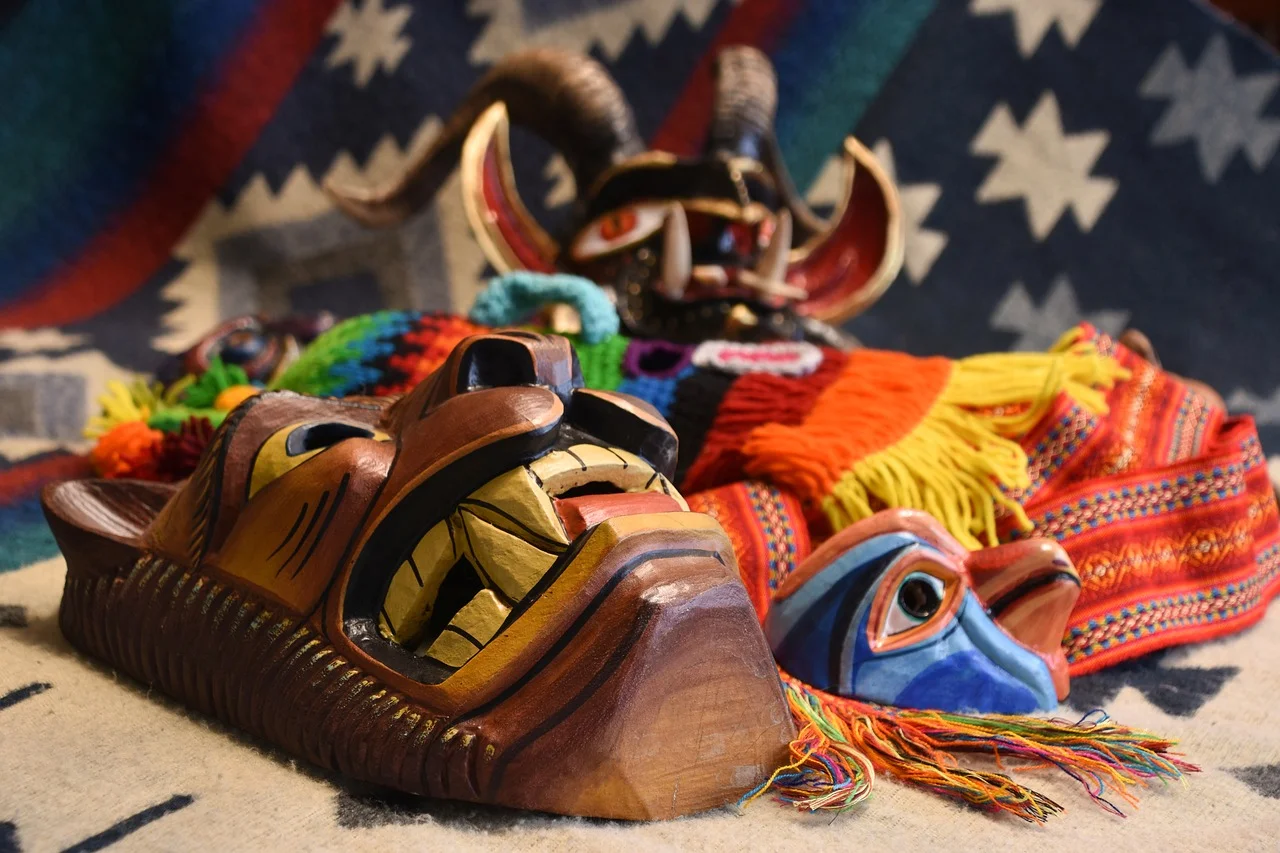
Traditions & festivities
Ecuador — A land of year-round celebrations
Ecuador is rich with tradition all year round. Take a look at the wealth of cultural expressions that make visiting this land an experience of a lifetime.
Paseo del Chagra — The Chagra Procession
The first time the Chagras left the mountains and arriv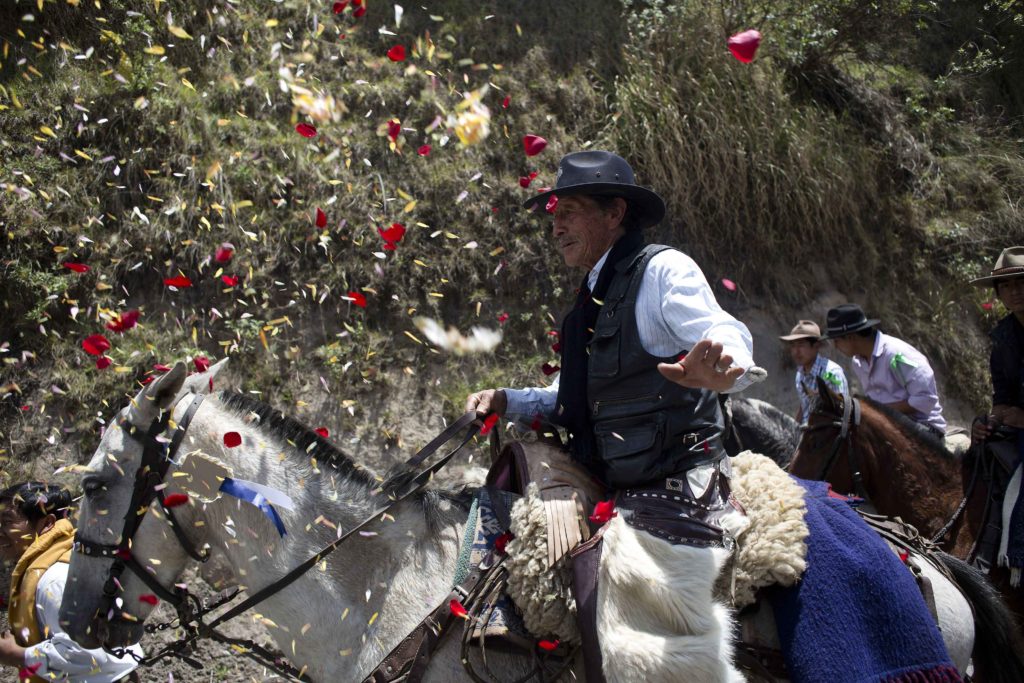 ed by the big city was in 1877. A group of men dressed in hats, ponchos, sheepskin pants, and riding horses turned up one day at the center of Machachi city and with the authority of the parish priest they took the Christ figure “El Señor de la Escuela” in a procession reaching the skirts of Cotopaxi volcano to thank God for keeping their crops alive through the volcanic eruption of that period. The Chagras are well-known for the impressive horseman skills and exceptional management of cattle. To foreign visitors the chagras may be best described as the Ecuadorian cowboys. And every year by mid July in Machachi the new Chagras relive this procession in one of the most iconic celebrations of the Ecuadorian Andes.
ed by the big city was in 1877. A group of men dressed in hats, ponchos, sheepskin pants, and riding horses turned up one day at the center of Machachi city and with the authority of the parish priest they took the Christ figure “El Señor de la Escuela” in a procession reaching the skirts of Cotopaxi volcano to thank God for keeping their crops alive through the volcanic eruption of that period. The Chagras are well-known for the impressive horseman skills and exceptional management of cattle. To foreign visitors the chagras may be best described as the Ecuadorian cowboys. And every year by mid July in Machachi the new Chagras relive this procession in one of the most iconic celebrations of the Ecuadorian Andes.
-
- For horse riding aficionados the Paseo del Chagra is the absolute best opportunity to see andean riders perform all-kinds of tricks with their horses and bulls.
- Chagra is derived from the quechua word chacra that means a land parcel where members of a family work together to harvest its produce.
- Warmi Chagras, that is female Chagras, of course take part of the show and are skilled riders
- The Paseo del Chagra was officially declared in 2018 an Immaterial Cultural Patrimony of Ecuador.
- Besides the procession a wealth of gastronomic delicacies from the highlands are offered to visitors as well as a true fashion show of the finest Ecuadorian Andean indigenous clothing.
Día de los Difuntos — Day of the Dead
November is an important month for Ecuadorians, it brin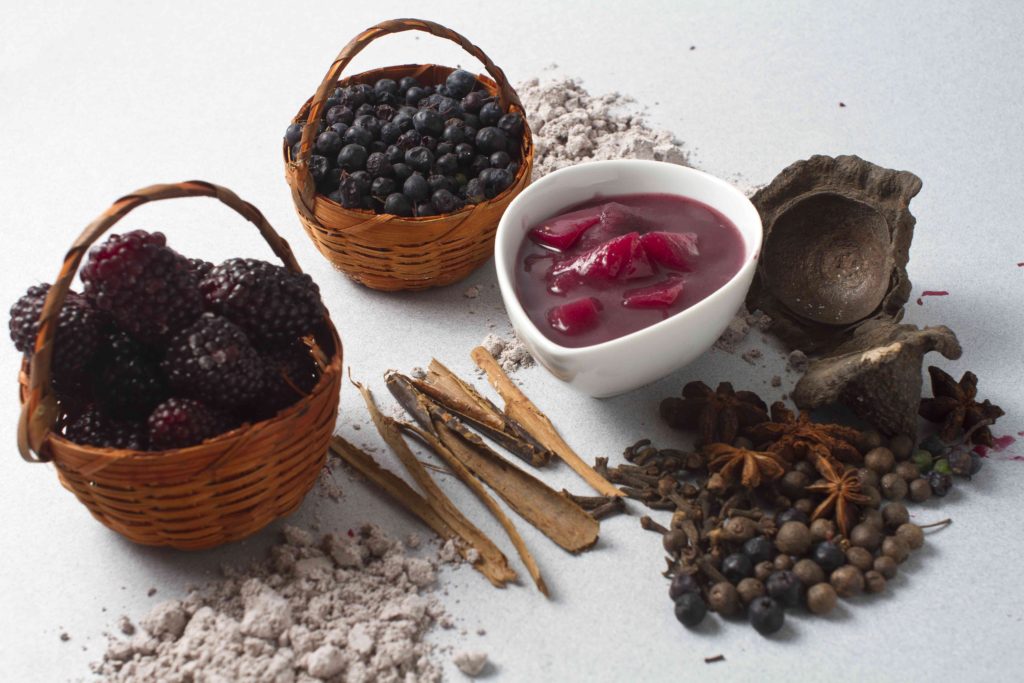 gs people together and brings a piece of the intimate ecuadorian culture to the forefront for all to discover an enjoy. November the 2nd is the Día de los Difuntos, a day when the deceased are remembered and honored. In some areas of the big cities and throughout the rural areas of Ecuador people flock to the cemeteries to visit their dead. The air is not of mourning across the cities and countryside but rather of a region-wide sense of companionship and familiarity. The streets are filled with the sweet scent of warm Colada Morada and passers-by are struck by the fragrant breeze of freshly baked Guaguas de Pan. Día de los Difuntos brings the nation together in a revival of aboriginal and colonial culture as well as modern takes on tradition.
gs people together and brings a piece of the intimate ecuadorian culture to the forefront for all to discover an enjoy. November the 2nd is the Día de los Difuntos, a day when the deceased are remembered and honored. In some areas of the big cities and throughout the rural areas of Ecuador people flock to the cemeteries to visit their dead. The air is not of mourning across the cities and countryside but rather of a region-wide sense of companionship and familiarity. The streets are filled with the sweet scent of warm Colada Morada and passers-by are struck by the fragrant breeze of freshly baked Guaguas de Pan. Día de los Difuntos brings the nation together in a revival of aboriginal and colonial culture as well as modern takes on tradition.
- Colada Morada is a beverage made up of 20 ingredients including pineapple, ishpingo, and mortiño — the andean berry.
- During Día de los Difuntos you can craft a self-made gastronomic tour to taste all the different versions of Colada Morada around the city. The search may take to intriguing places in Quito.
- Guagua de pan is a baby-shaped bread, the word comes from the quichua which in spanish means child. It is said it represents and honors deceased children in the day of the dead.
- Día de los Difuntos is a celebration that blends Catholic and Christian faith with aboriginal culture.
Semana Santa —Holy Week/Easter
More than two thousand penitents join the procession  of Good Friday across the streets of Quito’s old town. The gem of Semana Santa is undoubtedly the Procesión de Jesús del Gran Poder (Procession of Jesus the Almighty) which gathers hundreds of devotees to thank, ask, and worship while dressed in the iconic cucurucho clothing. They wear long purple robes that have tall conical hoods with small holes for eyes and mouth. Easter celebrations begin, however, earlier in the week with Palm Sunday a procession which depicts Jesus’ entrance to Jerusalem. A series of processions and a wealth of cultural expressions take place throughout the week. Culminating the celebrations during Easter Sunday the legendary fanesca is religiously eaten in homes and restaurants alike.
of Good Friday across the streets of Quito’s old town. The gem of Semana Santa is undoubtedly the Procesión de Jesús del Gran Poder (Procession of Jesus the Almighty) which gathers hundreds of devotees to thank, ask, and worship while dressed in the iconic cucurucho clothing. They wear long purple robes that have tall conical hoods with small holes for eyes and mouth. Easter celebrations begin, however, earlier in the week with Palm Sunday a procession which depicts Jesus’ entrance to Jerusalem. A series of processions and a wealth of cultural expressions take place throughout the week. Culminating the celebrations during Easter Sunday the legendary fanesca is religiously eaten in homes and restaurants alike.
- Fanesca is the emblematic soup of Easter week. It is shockingly made with 12 grains from the andes and in total with about 20 ingredients including codfish.
- Mothers and grandmothers usually make fanesca at home starting to cook one day in advance to have the dish ready for easter sunday.
- Everyone is welcome to the most iconic churches in Quito’s old town to have an ash cross drawn on their forehead for ash Wednesday.
- The 12 grains in the Fanesca represent Jesus’ 12 disciples.
- In the andean cosmovision the dead bring into contact the energy from the world of the living with that of the world above.
Fiesta de las Flores y las Frutas en Ambato — Flowers and Fruit celebration in Ambato
Balconies dressed with wreaths of colorful flowers, parks decorated with fruit and petals, an entire city dressed to celebrate life and the land that gives us life. Late July or early March every year Ambato in the province of Tungurahua brings out the very best cultural expressions to delight national and international visitors during its carnival. Because of its prominence as one of the most important Ecuadorian celebration the Fiesta de las Flores y las Frutas was declared Immaterial Cultural Patrimony in 2009.
- In August 1949 the city of Ambato was brought down by a 6.5 Ms scale earthquake.
- As a response to the devastation and as a way to celebrate life after such destruction the Fiesta de las Flores y las Frutas began in 1951.
- Every year the celebrations start with the establishment of a new slogan that encourages the inhabitants to value their city
- Astonishing parades, mesmerizing dances, and impressive costumes fill the streets of the capital of Tungurahua in a unique celebration richly imbued with the mestizo-amerindian cultures.
Mama Negra en Latacunga — Black Mother celebration in Latacunga
A truly exuberant celebration of the richly different traditions and cultures of the inhabitants of Ecuador. Around the 23rd until the 28th of September the annual celebration of the Mama Negra takes place in Latacunga capital of the province of Cotopaxi. The parade that characterizes the Mama Negra is made up of a wealth of characters including a captain dressed in colonial military attire, the Angel de la Estrella representing archangel Gabriel, and the Rey Moro depicting a noble and solemn moorish king among others. The celebration exalts the cultural richness coming out of the mixing of different cultures and peoples that make up today’s inhabitants.
- The Mama Negra represents a liberated slave that took along her two sons and infant daughter to freedom.
- It is always a man dressed up as a woman and it is the greatest honor given to the most prominent figure in town to represent the Mama Negra character.
- It is speculated that the festival began 1972 as a procession where the inhabitants of Latacunga, frightened by the eruptions of Cotopaxi volcano, seeked protection from the virgin of Las Mercedes.
La Diablada de Píllaro
According to legend during the colonial period the indi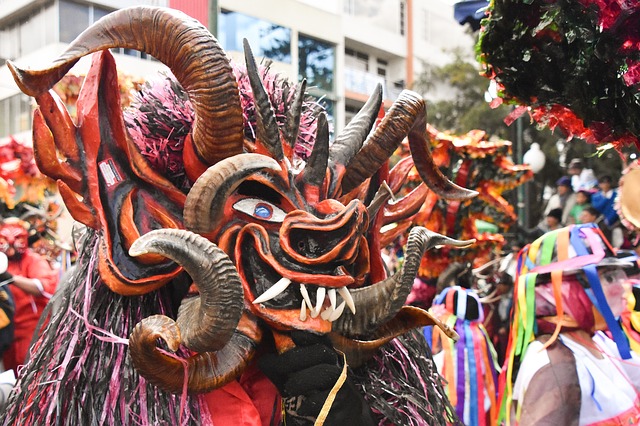 genous inhabitants of Píllaro would dress up as devils to rebel against and refuse the evangelization as well as the physical punishment brought upon them. Today, history has merged with tradition and what has come out of this fusion is one of the most unusual cultural expressions in Ecuador. The city of Píllaro, in the province of Tungurahua, welcomes not one but dozens of devils to flood the different neighborhoods of the city during the first days of January. Intricately crafted and strangely alluring devil masks stroll along the streets of city in fabulous parades accompanied by the music of the great Bandas Populares (popular band) playing the traditional and very tempting tunes of the saltashpas, san juanitos, and pasacalles.
genous inhabitants of Píllaro would dress up as devils to rebel against and refuse the evangelization as well as the physical punishment brought upon them. Today, history has merged with tradition and what has come out of this fusion is one of the most unusual cultural expressions in Ecuador. The city of Píllaro, in the province of Tungurahua, welcomes not one but dozens of devils to flood the different neighborhoods of the city during the first days of January. Intricately crafted and strangely alluring devil masks stroll along the streets of city in fabulous parades accompanied by the music of the great Bandas Populares (popular band) playing the traditional and very tempting tunes of the saltashpas, san juanitos, and pasacalles.
- Not just for those members of the parade, but absolutely anyone including children and tourists can dress up as devils and celebrate along the inhabitants of Píllaro
- Designing and crafting one of the devil mask for the parade can last up to 30 days
- Each mask is valued between 80 and 300 USD. They are absolute works of art.
- Popular belief has it that if you decide to be a devil for a year during the Diablada you must do so for seven consecutive years to avoid strange things happening to you.
Pawkar Raymi of Peguche
Pawkar Raymi comes from the quichua meaning Celebration of Blossoming and it takes place every year across the andean communities of Ecuador. The most well-known Pawkar Raymi is that of Peguche in the northern city of Otavalo. Among the various activities the Tumarina, a celebration of water and flowers, is particularly impressive as it gathers the women of the community who collect wild flowers and bring water from different springs to their homes in order to gently drop the mixture of water and petals on their beloved ones head whispering the words of luck such as Kayguhuanllapash meaning “I hope your life blossoms like these flowers”.
- This andean carnival is associated with the fertility of the land and consequently to human fertility.
- The central event is the opening of the indigenous football world championship which began in 1955 and continues to the day.
- Visitors can take baths with wild flowers in the natural water springs during the Tumarina festivity to also come into contact with nature.
The celebration ends with the positioning of a new Prioste who will be in charge of organizing the next Pawkar Raymi.
Corpus Christi
Literally translated as “the body of Christ” is a celebrat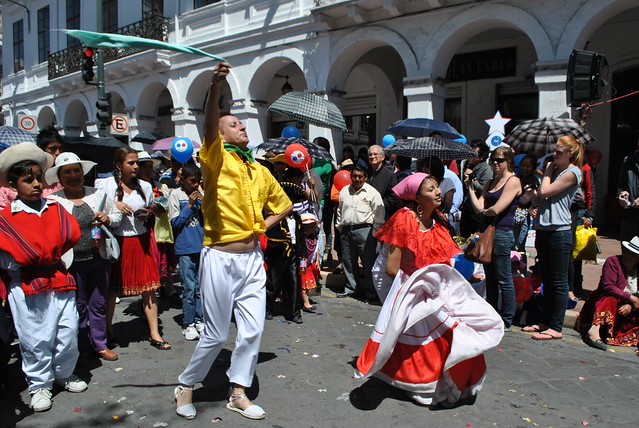 ion of the Catholic faith commemorating the eucharist and held in many cities and towns of the ecuadorian andes. Cuenca’s imposing and beautiful cathedral along with its plaza, and the numerous other locations where Corpus Christi is celebrated are the every June the stage where for centuries have simmered catholic, colonial, and aboriginal cultural expressions to give rise to the modern cultural syncretism of today’s Corpus Christi celebrations. Dancers with colorful garments swirl across the roads while a number of white-clothed characters bearing ankle bells and carrying tall rectangular hats carpeted with mirrors encourage visitors to celebrate under the sun kissed streets of these andean towns.
ion of the Catholic faith commemorating the eucharist and held in many cities and towns of the ecuadorian andes. Cuenca’s imposing and beautiful cathedral along with its plaza, and the numerous other locations where Corpus Christi is celebrated are the every June the stage where for centuries have simmered catholic, colonial, and aboriginal cultural expressions to give rise to the modern cultural syncretism of today’s Corpus Christi celebrations. Dancers with colorful garments swirl across the roads while a number of white-clothed characters bearing ankle bells and carrying tall rectangular hats carpeted with mirrors encourage visitors to celebrate under the sun kissed streets of these andean towns.
- During the colony missionaries fused the aboriginal celebrations of Inti Raymi (summer solstice) with the commemoration of Corpus Christi.
- Today Corpus Christi and Inti Raymi are celebrated separately.
- Cuenca’s old town and Abdón Calderón park are flooded by tents safeguarding thousands of sweets specially crafted for the celebrations.
Inti Raymi
The festival of the sun is a uniquely and profoundly am erindian tradition. It celebrates life by showing gratitude to the mother earth deity, Pachamama, for the harvest and praising the sun deity for blessing the earth and promoting the fertility of the land. During the months june across the ecuadorian highlands this incaic legacy which coincides with the summer solstice is celebrated with great enthusiasm. Inti Raymi is one of the four annual festivities of the andean calendar, it praises the sun — Inti — while Pawkar Raymi praises the earth — Pachamama.
erindian tradition. It celebrates life by showing gratitude to the mother earth deity, Pachamama, for the harvest and praising the sun deity for blessing the earth and promoting the fertility of the land. During the months june across the ecuadorian highlands this incaic legacy which coincides with the summer solstice is celebrated with great enthusiasm. Inti Raymi is one of the four annual festivities of the andean calendar, it praises the sun — Inti — while Pawkar Raymi praises the earth — Pachamama.
- The main day of celebration is the 24th of July, a day that within the andean cosmovision, the sun is closest to the earth.
- Live music accompanies dancers and performers who are led by Aya Uma, a mythological character believed to be protector of nature and fueled by the spiritual energy of the mountains.
- The traditional pampamesa, an ancestral ritual in which food from the area is shared atop a tablecloth on the floor for all to have access, is present during the celebrations.
- Indigenous identity is strengthened through the celebration of Inti Raymi as an opportunity for the inhabitants to stand proud of their indigenous heritage.
Cacería del zorro — Fox Hunting
It all begins with a parade across the main streets of the andean city of Ibarra as part of the celebrations for its foundation. Riders, young and old, perform tricks with their horses and greet the visitors who lining the streets eagerly wait for the crowd-pleasers — the zorros. Everybody knows that after the parade the real competition begins and the zorros will be at the center of it. During the race riders will test their speed and skill trying to catch the tail latched onto the zorro’s back who is the winner of last year’s competition. Across hills, ravines, and valleys the zorro will have to evade the agile riders. Crowds cheer and bet for their favorite riders and once the competition is over and the new zorro is crowned the afterparty can begin.
- The Cacería dates back to 1972 and started in Quito before settling in Ibarra as an official celebration of the city.
- The hunting has different categories: children, teenagers, Masters, and the Elites.
- The very first ‘zorro’ in the competition was a frenchman named André Oviol, and the first winner was Hugo Serrano a rider from the city of Ibarra.